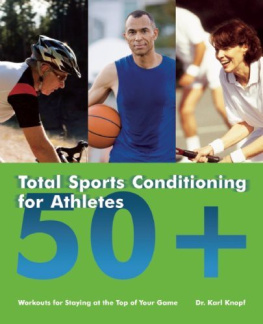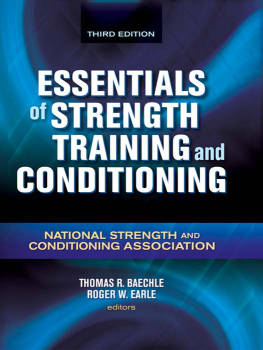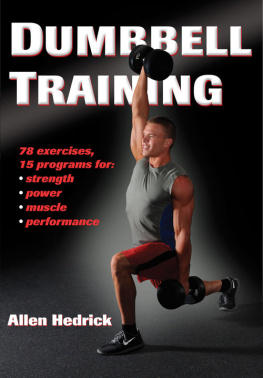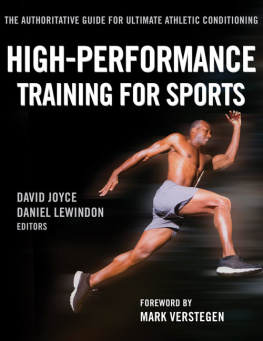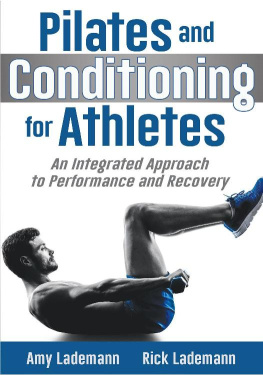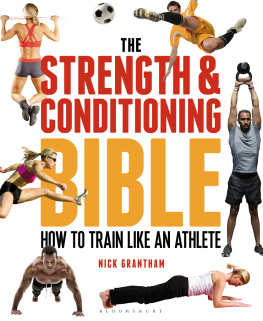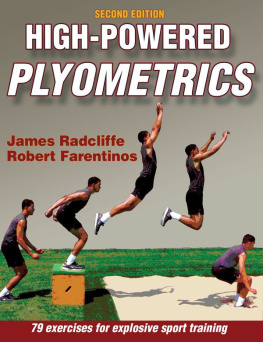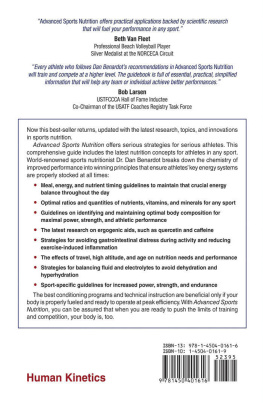Table of Contents
part 1 : overview
forever fit
In the United States, people are staying younger longer and engaging in active lifestyles like never before. The mantra of todays older adult is Life begins at 50. Were in better health, are better educated, and are wealthier than any previous middle-age generation. The 50-plus age group goes by many namesbaby boomer, older American, mature adult, retiree, while some prefer to be called master athlete or vintage athlete. Our group is not satisfied by living on past achievements. Were looking for new challenges physically, academically, and socially.
Todays master athletes are seeking far more than an exercise program that improves their health or physiquethey desire a challenging exercise program that will help them cultivate the way they function in everyday activities as well as how they function while playing. As one master athlete said, Life is not a journey to the grave with the intention of arriving safely, with a pretty and well-preserved body, but rather to skid in broadside, thoroughly used up, totally worn out, and loudly proclaiming, WOW, what a ride!
Many master athletes are revisiting the games and sports they were devoted to in their youth, while some are discovering new recreational activities: fun runs, century bike rides, triathlons, open-water swims, track and field, basketball, softball. Age, gender, and even physical limitations pose no barrier. Proper training and good equipment will allow master athletes to enjoy their sport as long as their passion exists.
Join the ranks of those who understand that age is no excuse to be sedentary and weak. Age is just the numberwhats more important is how you feel, how you act, and how you play. Most of us dont want to live long to only survivewe want to thrive and enjoy a fulfilling quality of life. In fact, a private secret that numerous master athletes have is that they cant wait for their next birthday so they can move up a category to compete against a different group.
Total Sports Conditioning for Athletes 50+ strives to present techniques to foster better health and wellness and, more importantly, to provide some training tips that will allow you to continue competing as you age and help you preserve and improve your sports performance. Youll learn how to train smart and not get hurt so that you can truly age to perfection.
Author Karl Knopf (right) makes some adjustments.
the perks of play
On the journey of life, the road to health and wellness is determined by the daily choices we make. Good choices make the road smooth, uneventful, and satisfying, and more Americans than ever before are enjoying longer rides. In 2000, there were 120 million Americans 40 years and older. By the year 2020, there will be 160 million Americans who are 40 plus. The 85-plus age group is swelling but the centenarians are the fastest-growing group.
The Centers for Disease Control attributes this increased longevity to the reduction of six of the fifteen leading causes of death, most notably heart disease, cancer, stroke, the flu, liver disease, and accidents. With improved antibiotics, water quality, and sanitation, life expectancy has improved. In the 1880s, people died in childbirth and from pneumonia. Today, were dying from the consequences of too much food and inactivity.
Countless older adults are rusting out long before they wear out. Much of what we associate with aging is really the culmination of misuse, disuse, and abuse of our bodies. This can be the result of poor health habits, inactivity, or simply overdoing it. A multitude of people age as a result of disusing their bodies, perhaps living a sedentary, zoo-like existence in front of the TV or computer; these people suffer from hypokinetic disease or couch potato syndrome. Misusing their bodies can also hasten the aging process; this misuse is usually the by-product of chronic and habitual improper body mechanics while playing or working. The people who are aging faster than most are doing so by abusing their internal systems, either through smoking, drinking, or eating excessively.
Our objective in our golden years should be to increase both our life span and our health span. Most of us know what life span is but most people are not familiar with health span. Health span includes being more energetic, being more flexible, and being able to enjoy life more fully. Simply put, its being fit for life and for the challenges and demands presented by it. Staying active can halt the damage of normal aging and perhaps even reverse it.
Professional athletes in just about every sport attain their peak in their late 20s, with the onset of decline occurring in their early 30s. Many sports such as baseball require a complex combination of many skills. Speed in these sports peaks around the age of 23, while power tops out at age 26. In general, power wanes sooner and more dramatically than endurance, with most athletes showing some loss in their early 30s. Endurance performance peaks for men in their 20s, declining by about four percent between the ages of 25 and 55; women peak in their 30s, although their strength and power show a faster decline.
In normal aging, we decline about two percent a year; active and fit people age at about half a percent. Multiply two percent versus half a percent over 30 years and that decline can be the difference between remaining independent and being confined to a wheelchair or nursing home. As we age, we lose about six to eight percent in relative power. Power declines to a greater degree than strength over time, and it accelerates even faster after the age of 60. Flexibility declines about five percent each decade, which can lead to impaired balance and difficulty in doing simple things like tying your shoes. After 70, we experience a significant loss of aerobic ability.
Dont despair, though. How we age is largely influenced by how we live. Our longevity is in our hands: 30 percent of it lies in our genes, leaving 70 percent up to us. We have the knowledge to make a significant change in our qualityand quantityof life, and what we do today will determine how we live tomorrow. The fountain of youth has been discovered. Its not in a bottle, in an injection, or in a pill. Its found in a daily dose of sensible physical activity. Research shows that, with proper exercise and nutrition, fit 60-yearolds can retain 80 percent of the strength they had when they were 25. Just walking briskly can slow down the effects of aging and can improve aerobic capacity by 15 to 20 percent. Lifting weights two to three times a week for 20 minutes can recapture strength and rebuild muscle. Engaging in power training minimizes losses in power while proper sports conditioning can bring back strength and functional ability.
A national study found that women are generally happier after 50 and reach their peak of satisfaction with life in their 70s.
The sport-specific exercise programs in Part 2 will further help you improve and/or maintain your physical abilities. Theyll also contribute to a positive self-image, foster better quality of sleep, enhance bone density, and assist in weight control.

